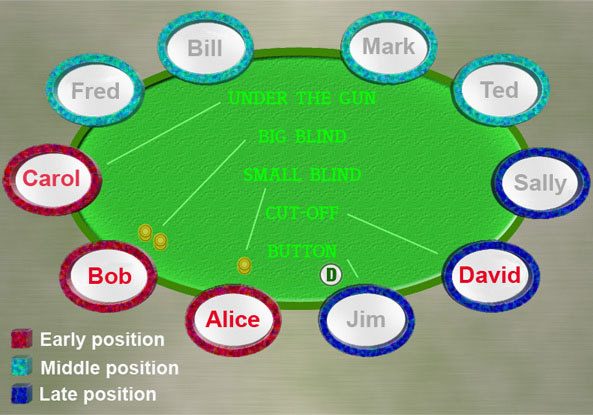Ratholing Poker
Posted : admin On 3/28/2022
Poker is full of legitimate strategy techniques that you can use to gain an edge over opponents. In fact, you can literally spend a lifetime learning how to play better poker.
However, poker also includes some less savory tactics. Bum hunting, where winning players only take on less skilled opponents heads up, is one of the best known examples.
People hate ratholers because they're taking money out of the game that they are unwilling to put at risk. IMO though doing it at Rush is perfectly fine if you're not comfortable playing deep. In poker, 'ratholing' is the term given to the act of taking chips off the table during a cash game without telling anybody. Let's say that you are playing in a cash game at your local casino. You start with $200 in chips and quickly double up when you are dealt pocket Aces against your opponent's pocket Kings. Ratholing is the act of taking chips off the table during a poker cash game. Here’s an example on how it works: You buy into a cash game with $20. Your stack increases to $50.
Ratholing is another cheap tactic that players use to gain an advantage. But it’s not as well-known as bum hunting.
I’m going to discuss more about ratholing, including how it works, what advantages it provides, and why opponents hate this technique.
What Is Ratholing in Poker?
Ratholing is the act of taking chips off the table during a poker cash game. Here’s an example on how it works:
- You buy into a cash game with $20.
- Your stack increases to $50.
- You remove $30 from the table to guarantee that you don’t lose it.
- Your stack is back to $20.
Ratholing (a.k.a. “going south”) can be pulled off in different ways. In the scenario above, you remove money from the table and continue playing.
Another method involves leaving the table and buying back in later with a smaller amount. Here’s how this would play out:
- You buy into a game for the maximum of $200.
- Your stack increases to $400.
- You leave the table.
- You return and buy back in with $200.
You’re basically doing the same thing in this situation as you did in the other scenario. The main difference, though, is that you’re actually getting up from the table for a while.
Ratholing is impossible at many online poker rooms. After leaving a table, you’ll have to buy back in with the same amount you left with (e.g. $150).
You may also be able to sit at the same table again after some time has passed with less than you left with. This situation all depends upon the dealer’s memory and if the same players remain at the table.
Certain poker sites allow ratholing in their fast-fold variants. Fast-fold poker sees you move to a new table as soon as you fold cards, rather than waiting for the hand to finish.
The sites in question will let you stand up from your seat and quickly sit down with a lesser amount. Keep in mind, though, that this scenario only plays out with specific fast-fold versions.
Why Is Poker Ratholing Often Banned?
As mentioned above, the majority of online and live poker rooms ban ratholing. But why is this tactic such a big deal?
It makes sense that you can’t rathole in poker tournaments. Before an all-in call, opponents must know how many chips you have and what it’ll take to knock you out.
The restriction on cash game ratholing is more ambiguous, because you can technically pick up your chips and leave any time. However, poker rooms definitely have good reason for banning ratholing in this setting, too.
The main problem with ratholing is that it takes money off the table. Going further, many players get angry when they’re deprived of the chance to win back losses.
Here’s an example:
- An opponent wins $50 off you.
- They pocket the $50, thus, removing money from the table.
- You and other players have no chance of winning that extra $50.
On one hand, you should seemingly be able to pick up chips at any point in cash games. But the problem is that it’s an unethical move that disparages players and hurts poker rooms.
Every poker site or land-based cardroom that I’ve played at in recent years has an anti-rathole rule. They ban any practice that can harm their business or annoys customers.
Can Ratholing Help You Win in Poker?
Ratholing is looked down upon by both cardrooms and poker players. Nevertheless, some people still use this technique in an attempt to gain an advantage.
The benefits of ratholing are slight and specific to individual players. In other words, this tactic won’t benefit every type of player.
Some ratholing perks are similar to those with short-stacking. The latter refers to purposely playing at a cash table with less than the maximum buy-in (e.g. $40 at a $200 buy-in table).
The first thing that ratholing does is reduce your potential losses in any hand. This method becomes attractive when you hate risking large amounts during all-in decisions.
Another thing that ratholing can do is tilt your opponents. If you’re playing in a setting where you get away with it, then they might get so annoyed that they begin playing worse.
Of course, ratholing doesn’t provide any massive advantage. It has more internal value than anything, especially if you’re a bad post-flop player who wants to minimize risk.
But some players have convinced themselves that ratholing provides a house edge of epic proportions. Appeasing these players is part of the reason why poker rooms ban the practice.
Why Do Poker Players Hate Ratholers?
I just mentioned how certain players believe that ratholing gives opponents a massive advantage. While not necessarily true, this is one of the reasons why people hate ratholers.

However, there are other reasons behind this hatred as well. Many players consider ratholing to be terrible poker etiquette.
Everybody wants a chance to win their money back, even if they just end up losing more in the process. Ratholing not only robs them of this chance, but also takes table money out of circulation.
Ratholers are looked down upon in terms of skill level, too. The general perception is that good players can defend their stack, rather than resorting to pocketing part of their winnings.
Poker rooms themselves dislike such players. Ratholers take money away from games and generally annoy everybody else at the table.
Finally, this practice would destroy the game if it were continually allowed. Imagine how destructive the following scenario would be to poker:
- Everybody who wins a big pot takes that money off the table.
- Those who’ve banked their winnings eventually leave for the night.
- Soon, the poker room has little money circulating around.
- All remaining players are forced to quit early, because no more chips are available.
This situation would create an environment where players had to win quick or miss out. Poker would also be a much different game and one that was less fun to play.
Pros of Poker Ratholing
So far, most of the evidence goes against ratholing. But those who employ it may gain one or more of the following positive benefits.
Reduce Variance
Poker variance can affect you at any point. When variance isn’t in your favor, you can lose quite a bit of money.
Going further, it lowers the overall amount of variance you’ll experience in poker. You can’t lose as much during an all-in pot when only playing with $25 at a $100 buy-in table.
Limit Your Post-Flop Decisions
You may be a solid pre-flop player, but struggle with post-flop play. Ratholing can help in this regard when you’re playing with a smaller stack.
All you need to do is pull enough chips off the table to have less than the maximum buy-in. The lower your stack, the less you must worry about in post-flop play.
Here’s an example:
- The table’s maximum buy-in is $100.
- You rathole the point where you have $30.
- Nobody can ever force you to call for more than $30 post flop.
The amount of money you stand to lose during all-in calls decreases significantly in this situation. Furthermore, you can use ratholing until you improve as a post-flop player and feel more confident.
Ratholing In Poker
Throw Opponents off Their Game
Sometimes, you may get away with short stacking, even when an opponent or two notices. These same opponents may begin grumbling without actually telling on you.
They might become so annoyed that they’re concentrating on you instead of their own game. In extreme cases, they’ll become tilted and start making bad plays as a result.
Fairly Easy to Get Away With in Live Poker
Many real money online poker sites program their software to ensure you can’t rathole. You’ll be forced to buy in for the same amount of chips as you left with or have to choose another table.
Live poker, on the other hand, presents opportunities for you to rathole in certain cases. Most notably, you can slip chips into your pocket when others aren’t looking.
You can also play within the limits of ratholing rules. Here’s an example on how this can work:
- You leave the table with $400 worth of chips and want to pocket $300 of it.
- A live or online poker room forces you to sit out at least an hour before doing this.
- You wait exactly 60 minutes. You buy in for $100.

If all else fails, you can simply point to the fact that you’re within the house’s rules.
Cons of Poker Ratholing
Ratholing isn’t the worst poker sin, but it’s highly unpopular among both players and poker rooms. That said, this strategy has some notable downsides.
Most Poker Rooms Ban Ratholing
The biggest downside to ratholing is that it’s flat-out prohibited in almost every case. Maybe you’ll find a fast-fold variant or poker room where it’s allowed, but don’t hold your breath.
This tactic removes money from tables, meaning poker rooms won’t earn as much rake. It also gets on players’ nerves and can make the game less fun overall.
Ratholing Poker
Many Players Hate Those Who Rathole
You may be perfectly fine trying to float a poker room’s rules and ratholing when possible. But are you willing to play with a bunch of opponents who suddenly hate you?
Poker has certain unspoken etiquette rules. Ratholing definitely violates these rules and will turn the table against you, even when you wait the allotted amount of time before rebuying.
Prevents You From Maximizing on the Nuts
Perhaps you don’t care about what other players think. However, you no doubt care about your own winnings.

Ratholing can be bad strategy, because it prevents you from maximizing your great hands. Your smaller stack will prevent you from capitalizing on those times where you have a nut flush.
Conclusion

Ratholing Poker

Ratholing can provide some small advantages, especially when it comes in the form of short stacking. You can minimize variance and reduce the difficulty in making post-flop decisions.
The goal, though, is to reach the point where you’re not relying on ratholing and other gimmicks. You instead want to be a solid player who’s confident enough to play without pocketing small profits.
Many poker rooms make this decision easy for you anyway, with anti-ratholing rules. Players further dampen the matter by giving you crap about using this tactic.
Ratholing In Poker
Overall, I don’t recommend ratholing, because the downsides outweigh the benefits. But you might still consider it as a short-stacking strategy until you become a stronger player.